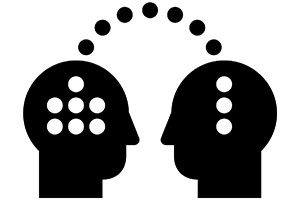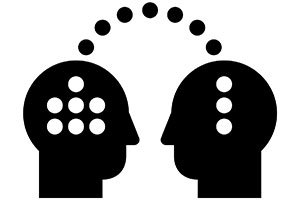 It may seem like a cliché to say that employees are the most valuable asset in any organization, but if your organization has felt the pain of losing a MVP who failed to transfer their knowledge before leaving, then the cliché rings true. The need to develop a knowledge transfer strategy is not new, yet only a small percentage of CEOs report their organization has implemented an effective knowledge transfer program. And while the “war for talent” certainly is a cliché, the reality is that recruiters and headhunters are targeting your top talent heavily right now and they’re one phone call away from developing their exit strategy. So, if you haven’t invested heavily in your engagement and retention strategy, the holes in your knowledge transfer process will become expensive mistakes.
It may seem like a cliché to say that employees are the most valuable asset in any organization, but if your organization has felt the pain of losing a MVP who failed to transfer their knowledge before leaving, then the cliché rings true. The need to develop a knowledge transfer strategy is not new, yet only a small percentage of CEOs report their organization has implemented an effective knowledge transfer program. And while the “war for talent” certainly is a cliché, the reality is that recruiters and headhunters are targeting your top talent heavily right now and they’re one phone call away from developing their exit strategy. So, if you haven’t invested heavily in your engagement and retention strategy, the holes in your knowledge transfer process will become expensive mistakes.
Before we dive into one strategy for knowledge transfer, it’s important to define what the term means. When an employee gives notice, they spend their last few weeks wrapping up projects, notifying colleagues/customers of their plans, and documenting their daily activities. This is not knowledge transfer; this is information transfer. When the employee is gone, the replacement can read through the notes and follow their predecessor’s instructions. Information transfer is about what we do in our daily activities.
Knowledge transfer is about why we do what we do. Knowledge transfer is about the lessons we’ve learned through struggles, challenges, and mistakes. Knowledge gained from experience is extremely difficult to train, and that is why few organizations report confidence in their knowledge transfer plans. It’s not an event, it’s a constant, and the importance of prioritizing knowledge transfer must be articulated and reinforced persistently.
One way to embed knowledge transfer concepts into the organization is to implement action learning exercises based on real problems. If you’ve ever been through a well-designed critical thinking training program, you’ve probably experienced the Challenger Explosion exercise. In this activity, participants are either given the exact information available to the Challenger leadership team or a similar version of the details applied to a non-aerospace situation like car racing. Then each group/team processes the information, asks relevant questions and decides whether or not they would choose to launch (or race). The vast majority of the time, teams choose to launch. Once they’ve announced their decision, the trainer usually shows a clip from the 1990 movie Challenger and lets everyone reflect on the impact of their decision. This exercise is powerful because participants feel emotionally connected to the impact of the decision and will remember the critical thinking lessons connected to the story far longer than they will remember anything in a PowerPoint slide deck.
Learning occurs when we struggle. Learning occurs when we’re emotionally connected with the content. We remember stories and experiences. We don’t remember bullet points, slide decks, or checklists.
Leaders who openly share stories of success/failure from their past are taking the first step towards knowledge transfer, but they can accelerate the returns by involving employees in the story. Instead of telling the story to passive listeners, write up the details you experienced and ask them how they would solve the problem. Give them space to think, time to ask questions, and the ability to consult with other resources internally. What they learn in the process of struggling to find the best possible solution will be both memorable and educational. Additionally, the struggle itself holds value. Studies show that when people perceive the information they’re learning is easy to grasp, they pay less attention and become overconfident in their ability to remember it in the future. Assigning a challenging scenario engages them in a discovery process and forces them to actively wrestle with how they’d handle a similar situation to avoid making mistakes. Experiences will be shared, creative and critical thinking will be challenged, high potentials will emerge, and knowledge transfer will become embedded in the organization’s DNA.

